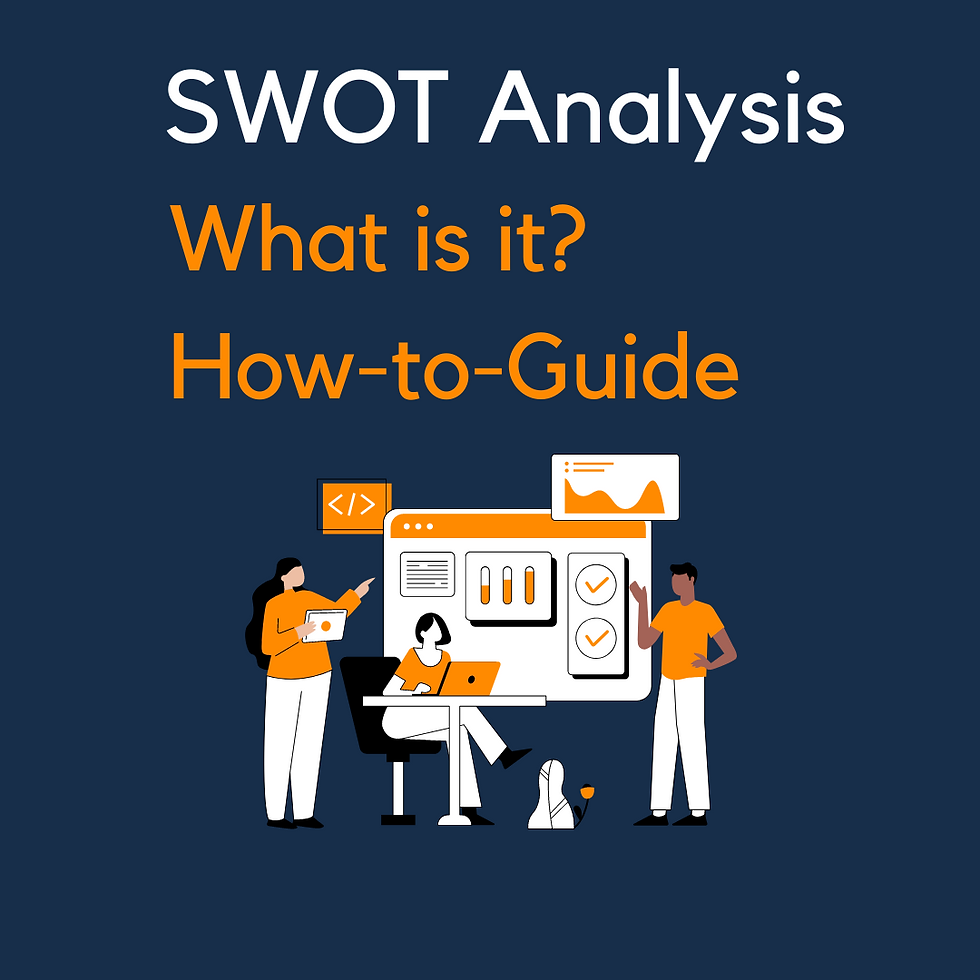Competitor Analysis
- Apollo Labs

- Aug 24, 2023
- 3 min read
Updated: Aug 29, 2023

Competitor Analysis: What It Is and How to Conduct One
Discover the benefits of a competitor analysis and learn how to conduct one for your business. No business operates in a bubble. If you’re a small business owner, chances are you think about your competition a lot. But what should you focus on, and what should you do with that information? That’s where a competitor analysis can help. At any stage of your business, it’s worth taking time to conduct one. You’ll identify competitors, research their marketing strategies, and assess your brand’s strengths and weaknesses. Before any big game, a good sports team spends time studying their opponent. Coaches will do research, watch game footage, and put together a scouting report on each opposing player. A competitor analysis is like a scouting report for your business—a tool for designing a game plan that helps your company succeed.
What is a competitor analysis? A competitor analysis, also referred to as a competitive analysis, is the process of identifying competitors in your industry and researching their different marketing strategies. You can use this information as a point of comparison to identify your company’s strengths and weaknesses relative to each competitor. You can do a competitor analysis at a high level, or you can dive into one specific aspect of your competitors’ businesses. This article will focus on how to conduct a general competitive analysis, but you’ll want to tailor this process to match the needs and goals of your business.
Why do a competitor analysis? More often than not, small business owners find themselves juggling many tasks at once. Even amid a busy schedule, though, it’s worth taking the time to do a competitor analysis.
Identify your business’s strengths and weaknesses By studying how your competitors are perceived, you can draw conclusions about your own brand’s strengths and weaknesses. Knowing your company’s strengths can inform your positioning in the market, or the image of your product or service that you want members of your target audience to have in their minds. It’s essential to clearly communicate to potential customers why your product or service is the best choice of all those available. Being aware of your company’s weaknesses is just as important in helping your business grow. Understanding where you fall short of your customers’ expectations can help you identify areas where you may want to invest time and resources. You might learn that customers prefer your competitors’ customer service, for example. Study your competition to find out what they’re doing right, and see what you can apply to your business.
Understand your market While identifying competitors, you may find companies that you didn’t know about or that you didn’t consider part of your competition before. Knowing who your competitors are is the first step to surpassing them. Conducting a thorough assessment of what your competitors offer may also help you identify areas where your market is underserved. If you find gaps between what your competitors offer and what customers want, you can make the first move and expand your own offerings to satisfy those unmet customer needs.
Spot industry trends Studying the competition can also help you see which way the industry as a whole is moving. However, you should never do something just because your competitors are doing it. Copying the competition without really considering your own place in the market rarely, if ever, leads to success. If you see your competitors doing something that you’re not, don’t rush to replicate their offering. Instead, evaluate what your customers’ needs are and how you can create value for them. It’s often better to zag when everyone else zigs.
Set benchmarks for future growth When doing a competitor analysis, you should include companies that are both larger and smaller than your own. Studying well-established businesses in your industry can give you a model of what success looks like and a reference point against which to compare your future growth. On the other hand, researching new entrants into your industry tells you what companies may threaten your market share in the future.



.png)